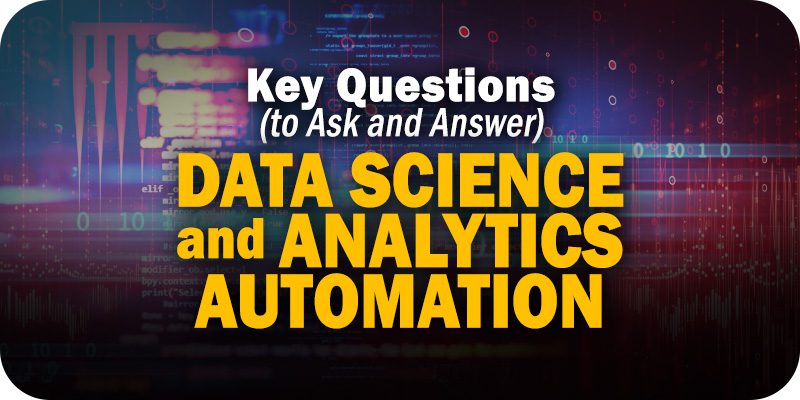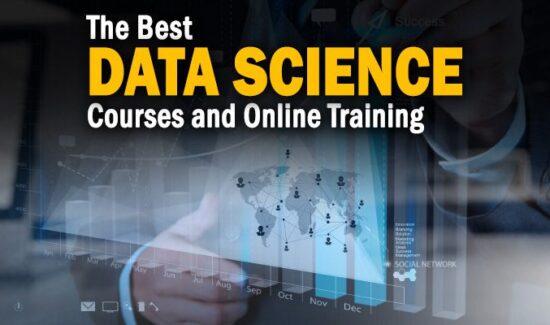4 Key Data Science and Analytics Automation Questions to Ask & Answer


This is part of Solutions Review’s Premium Content Series, a collection of contributed columns written by industry experts in maturing software categories. In this submission, Alteryx CDAO Alan Jacobson offers four key data science and analytics automation questions to ask and answer before investing in a new solution.
 Companies around the world recognize the importance of investing in AI, machine learning, and automation with over 99 percent spending in this space. Why? The data is quite clear that the analytic maturity of an organization directly correlates to business outcomes like profit, shareholder value, and growth. However, many companies want to accelerate their journey by making data-driven decisions in minutes instead of days. They likely had some isolated success making decisions informed by data, and likely have a small number of people that can do very sophisticated analyses but now want to drive this culture into every part of their business.
Companies around the world recognize the importance of investing in AI, machine learning, and automation with over 99 percent spending in this space. Why? The data is quite clear that the analytic maturity of an organization directly correlates to business outcomes like profit, shareholder value, and growth. However, many companies want to accelerate their journey by making data-driven decisions in minutes instead of days. They likely had some isolated success making decisions informed by data, and likely have a small number of people that can do very sophisticated analyses but now want to drive this culture into every part of their business.
In order to move forward, companies are looking at their strategies and working to identify what’s next. There are a number of important questions that will help you take that next step in your journey. Here are just a few:
Key Data Science and Analytics Automation Questions
What are the business problems you plan to solve?
According to analyst house Gartner, Inc., before beginning any automation project, it’s critical that the organization’s stakeholders clearly define the business goal. Unfortunately, there are times where the company’s stakeholders aren’t those closest to the problem. By educating and empowering analysts with the power of analytics, those closest to where the gold is buried are able to mine it and solve problems. In addition, with the added data-driven clarity that comes from this analysis, leaders are able to better understand the root causes and drivers and set metrics around outcomes versus symptoms.
How many people are you investing in?
Once you’ve established your goals, there is a critical decision point on whether to invest in the broad base of knowledge workers or to make an investment in a small team to perform a specific task. Most companies have a few highly analytic individuals but have not become data-driven as an organization.
Have you identified a desire to drive analytic maturity in your organization? Are you looking to advance the skills across your organization? If so, upskilling knowledge workers and providing the opportunity to learn data and analytics skills will help employees bridge that skills gap. If you’re looking to manage efficiencies for yourself and your clients, as major consulting firm PwC did, providing more modern tools and technologies than a basic spreadsheet is a key factor in becoming more analytically mature as an organization.
Who will lead the effort?
Digital transformation and driving the business forward is more than a technology decision, it’s a change management process. The most successful companies have a leader to drive the effort across the organization, helping them to implement best practices and drive the innovation process. These transformation leaders come from myriad backgrounds, but what is surprising is that most do not come from technology (IT), but instead from consulting, data science, or from internal positions driving transformation. It is critical to think through how the change will be received by employees and how they will be impacted on a day-to-day basis. Having the right leadership team in place will ensure this process goes smoothly.
How do you measure success?
Data science can have a profound impact on the business outcomes of an organization. Whether that’s top-line growth, bottom-line returns, efficiency gains, or perpetual upskilling for your knowledge workers, you need to be clear on the return you expect out of your investment. Will it be successful if you only have 15 people that have become more data-driven and analytic? Or is the goal to have 50 percent of your knowledge workers upskilled in the next 12 months? Do you want to see time savings from automation? How about hard dollar savings with increased sales conversion or reduced inventory costs? Are there quality measures like forecast accuracy or employee engagement that can be measured?
Setting the right high-level goals will help center and focus the team on the appropriate outcomes. Too frequently the goals are small; a single project in one area to be delivered versus a more transformative effort across the company. Thinking bigger will lead to more impactful outcomes.
With the speed of business today, actionable data insights are crucial to fuel better business decisions. Embarking on a digital transformation journey, and specifically, one into data science and analytics automation, requires a purposeful approach. At the onset of your digital and data transformation journey, be clear about the goals you want to accomplish, understand who you’re investing in and how you will measure success.



































